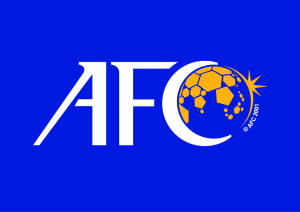By Paul Nicholson
December 28 – The Asian Football Confederation is undertaking a major revision of its men’s club competitions as it injects a more competitive foundation into its flagship Champions League and AFC Cup, both likely to be renamed as part of the new three-tier structure.
The new format will see the AFC’s top clubs compete against each other more frequently and in a more intense competition environment and is planned to be introduced for the 2024-25 season – slotting into the new season dates the AFC is adopting that will see a switch from a calendar year season to a season spanning the year end.
Currently the AFC has 76 participating clubs qualifying across two tiers of club competitions. Under the new format the clubs will be divided into three tiers with the top tier comprised of 24 clubs in total, divided into 12 teams in each of the West and East regions competing in a league format.
The new structure is a transitioning from a five-zone format to a focus on East and West enabling the top teams to face each other more frequently.
Each club will play four home and four away matches against eight different clubs within its region, with the top eight sides from both regions – 16 in total – advancing to the Round of 16 stage, which will be played in a home and away format.
The competition will then move to a centralised venue for the Quarter Finals, Semi Finals and Final, which will be played in single-leg ties.
The name for the new club competition is still to be decided but it is in essence an adaptation and radical updating of the current AFC Champions League. Reducing the number of teams in the top tier from 40 to 24, will remove a number of ‘dead rubber’ ties and replace them with more intense fixtures between the elite clubs.
“This is a little like the European concept for a Super League but the key thing here is that this is not a closed competition. The top teams from the leading nations will compete more frequently against each other but it will be on a merit basis,” said AFC general secretary Windsor John.
The second tier of club competition will see 32 teams divided into eight groups of four teams each. The clubs will play home and away in a round robin format in the Group Stage, with the top two sides advancing to the Round of 16. Knock-out rounds will be played over two legs with the Final being a single leg decider.
Tier 3 will be made up of 20 participating clubs divided into five groups. The clubs will compete in single-leg ties to be played in a centralised format with the top eight sides qualifying for the Quarter Finals. The Quarter Finals and Semi Finals will be played over two legs, both home and away before the Final is staged over a single leg contest.
The new structure will see movement between the three tiers. The losing teams from the Preliminary and Playoff stages of the top tier will be given the opportunity to participate in the second tier, and likewise, the losing teams from the Preliminary and Playoff stages of the second tier competition will participate in the third tier.
As well as a restructure of the AFC’s club competitions the new formats come with a package of other changes including more money for clubs and a change in foreign player regulations.
The AFC said that the changes are “perhaps the most significant reforms to be introduced since the enhancements to the AFC Champions League in 2009, amongst the recommendations include the introduction of new competition formats, lifting the foreign player quota and increasing the financial distribution for participating clubs.”
Earlier this year the AFC had approved an increase in the foreign players quota the existing 3+1 quota to 5+1 (five players of any nationality and one from an AFC MA). This will change again from the 2024/25 season with the AFC now recognising each nation’s domestic regulations on foreign player registrations. The same rule applies for FIFA’s Club World Cup.
Financing teams is crucial and the AFC said there are “plans in the pipeline to increase significantly the financial distribution to Participating Clubs”. That detail is expected to be released in the next month.
The new structure with a centralised final format for the top tier creates a new commercial opportunity for the AFC in terms of finding hosting partners. Overall the number of games will increase from 274 to 287 but what will stimulate the commercial marketplace is the increased meaningfulness and competitiveness of those games.
The AFC executive committee is expected to approve the proposals at its next meeting in January with more detail of the new structure.
Contact the writer of this story at moc.l1745396571labto1745396571ofdlr1745396571owedi1745396571sni@n1745396571osloh1745396571cin.l1745396571uap1745396571


